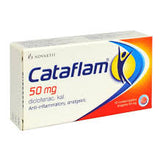featured Genital herpes
On by ZimSeller Pharmacy 0 comments
Genetic test for cancer gene
On by ZimSeller Pharmacy 0 comments
Genetic and genomic testing
On by ZimSeller Pharmacy 0 comments
Generalised anxiety disorder in adults
On by ZimSeller Pharmacy 0 comments
General anaesthesia
On by ZimSeller Pharmacy 0 comments
Gender dysphoria
On by ZimSeller Pharmacy 0 comments
Gastroscopy
On by ZimSeller Pharmacy 0 comments





















